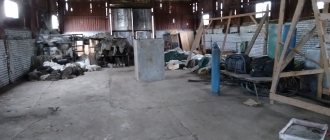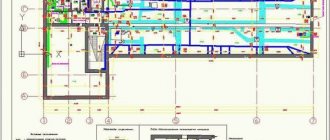Real estate is usually divided into residential and non-residential. The first includes premises where people legally live: apartment buildings, dormitories, private houses. The housing stock also includes hotels.
Non-residential property is most often used for commercial or public purposes.
The need to transfer housing from one fund to another arises for many: for entrepreneurs who bought housing in a house for a store or for conversion into an office.
If such a need arises before you, there is no need to get lost. There is a possibility of transferring the apartment to another fund.
Why translation is needed
Transferring your home from residential to non-residential and vice versa may become necessary for many reasons.
Most often, businessmen convert purchased apartments into shops, pharmacies, restaurants and cafes, and offices.
The status of residential premises is needed because only in it you can register and live too.
If you decide to convert your property to non-residential use, consider whether this process can be avoided.
According to the Housing Code, Article 17, it is possible to engage in commercial activities in a residential area in some cases, under which the following conditions are met:
- Your house and apartment neighbors will not suffer from your activities;
- The house in which your home is located does not belong to a dilapidated building;
- A potential entrepreneur is registered in the area where he plans to do business.
However, in most cases they still prefer to change the status of housing, and this has its advantages.
The main benefit of the owner who transfers his apartment to non-residential stock is that it becomes more expensive by about 20% when sold.
But here you may encounter another difficulty: will you be able to sell your non-residential property later? How interested will an entrepreneur be in this? So, before you run for profit, you need to calculate all the risks.
The downside for you here will be the wasted time on paperwork and searching for buyers.
While the property is idle waiting for a buyer, you will have to pay utility bills, which are approximately twice as high for non-residential premises . You will also have to pay property tax , namely 2.2% of the residual value of the premises every year.
That is why the translation is carried out by the entrepreneurs themselves who bought housing.
How to convert a garden house into a residential one
It is necessary to submit an application to the local government authorities, to which a conclusion on the inspection of the house must be attached.
The conclusion is prepared by a legal entity or individual entrepreneur who is a member of a self-regulatory organization for engineering surveys. For example, BTI enterprises throughout the country.
What should be in the conclusion? It describes the site and the house itself, which must meet the basic requirements for a residential building. The decision to recognize a house as residential is made by the local administration, which has jurisdiction over the territory of the gardening or dacha community.
How to change the status of an area
Transferring an apartment to another fund and vice versa simply won’t work.
The Housing Code specifies a number of requirements, compliance with which is mandatory . If the listed conditions are not met, you can not count on changes in status.
In order for an apartment to become non-residential, you need to consider:
- If the area is more than 100 sq. meters, provide a second exit to the street;
- If the premises in which you plan to carry out your activities are located on the second floor or even higher, prepare for the fact that you will have to change the status of all the apartments that are located below. According to the rules, these square meters must also become non-residential;
- Provide all engineering communications;
- Check out of your home before starting the transfer procedure, because... no person can be registered in non-residential premises either on permanent or temporary terms;
- Legalize all redevelopments.
Remember that premises located in a building classified as a cultural heritage site cannot become non-residential.
In addition, only the owner has the right to change the status.
You cannot make non-residential the area where you live under the terms of a social tenancy agreement.
Not everything is so simple with the transfer to housing stock. It must also meet certain requirements:
- The building in which non-residential premises are located must have durable structures. It also should not be classified as an emergency fund or subject to reconstruction or demolition;
- The premises must be absolutely safe and equipped in such a way that future residents cannot be injured or injured. The same requirement applies to the adjacent territory;
- All utility networks must be in order and suitable for use.
We are talking about heating networks, sewerage, water supply and electricity. Utilities located in the house must also meet safety requirements.
When converting to a living space, the owner will have to think about the height of the ceilings, the concentration of harmful substances in the air, the number of floors of the building, and sound insulation. All this must also comply with the standards that were determined by the Housing Code.
In addition, during the transfer, no matter to which fund, the property should not be encumbered with anything : debts, loans, etc.
What is the difference between a garden house and a residential one?
A garden house is essentially a non-permanent building intended for temporary residence. Now, as Bednyagin explained, in the Unified State Register of Real Estate, garden houses are designated as “a residential building with a non-residential purpose.” But soon all of them will automatically be renamed “garden houses”.
Dachas higher than three floors cannot be built, but underground floors can be built
A residential building is a separate building that has three above-ground floors. Its height can be no more than 20 meters. A residential building must consist of rooms and auxiliary premises and cannot be divided into separate apartments. The enclosing structures of the house must have heat-insulating properties that allow living in it all year round. In other words, the walls should not be made of plywood or cardboard, but, for example, logs or bricks. The house must be equipped with engineering systems. This includes water supply, sewerage, electricity, heating. Also, a residential building must meet the requirements of insolation and ventilation, that is, the people living in it must be warm, light and comfortable.
We live in a non-residential
Once you've converted your apartment into non-residential space, don't expect to be able to live in it. Along with a change in status, residence rights are lost. The legislation here does not provide for any exceptions: neither the owner, nor his relatives, nor loved ones can live in such a place.
You will no longer be able to register and obtain a residence permit at this address in a non-residential area.
Although, of course, one cannot help but say that no one can forbid you to be in your office or store. Of course, they will probably not control how much you spend in non-residential premises.
You have the right to rent out such objects or simply own them.
What happens if notification is not given?
— If you built a house and did not take advantage of the simplified procedure for registering residential and garden real estate, or sent a notification, then in fact you created an unauthorized building. This means that the court may oblige you to demolish it or bring it into compliance with urban planning requirements. The demolition of such a building or bringing it into compliance is done at the expense of the owner of the land plot, emphasized Alexander Bednyagin.
He advises especially taking these points into account when buying a house or cottage. You only need to purchase real estate that is registered.
Where to go for translation
Today, the procedure for submitting documents in many regions has been simplified thanks to Multifunctional Centers that operate on a one-stop-shop principle. In one place you can submit all documents, in some cases, order certificates and receive the corresponding document after all procedures are completed.
You will need with you:
- Application for transfer;
- Documents that confirm your right of ownership;
- Documents from the BTI: technical plan, technical passport, floor plan of the house;
- If, when changing the status, some kind of redevelopment is necessary, you are also required to provide a design for it.
You must find out whether you can transfer your premises to another fund or not within 45 days. This is how long it takes to review the application and check the documents provided.
Once the decision is made, the authorized bodies have three days to notify you of their consent or refusal. The relevant paper can be sent by mail or sent to the Multifunctional Center.
A notification can also be sent to your email.
Do it before March 1st
A simplified procedure for registering rights to residential and garden houses is valid only until March 1. It is enough to fill out a declaration for the built house and contact a cadastral engineer who will prepare a technical plan. And submit documents for registration through the public services center.
This procedure is especially relevant for people who have already completed the construction of their home. This will make their life much easier. And those summer residents who have begun construction of a residential building, but do not have time to complete it before March 1, can submit a notification to the local government about the start of construction. From March 1, notification will become mandatory for real estate that is being built on lands for individual housing construction and on SNT lands.
60 million summer residents live in Russia today, according to estimates by the Union of Gardeners
What does the notice include? In this document, the applicant himself describes the building area, the planned height of the house, and the number of floors. And makes a graphic description of the location of the house on the land plot. The local administration reviews the notification for compliance of these parameters with urban planning regulations.
The notification nature of the document suggests that you don’t have to wait for a summary from local officials. But still, it is better to wait for an answer, so as not to redo what has been built. After all, it will be possible to register real estate after another notification, which, together with the technical plan, the developer submits to the same administration after completion of construction. And it is the administration that will send documents to Rosreestr for cadastral registration and registration of property rights.
— There may be such a situation: you started to build a house, but in the process you decided to change the original plan. For example, at first they wanted two floors, but then they decided that three would be better. What is needed for this? Notify the administration, and there will be no problems with subsequent registration,” explains Bednyagin.
The difference between a dacha and a residential building
A residential building is a permanent building intended for year-round living and having the necessary utilities. It is assigned to the citizen on the right of ownership and provides grounds for permanent registration in the locality.
The most important difference between a dacha and a house is the intended purpose. It is determined by the possibilities of using the structure. The house is intended for permanent, year-round living by the whole family. Therefore, there must be the necessary networks: heating, electricity, sewerage, ventilation. The cottage is intended for seasonal use. Even the most important communications for life may not be here.
Cost of premises for shops
The cost of non-residential premises on the ground floors is determined taking into account a number of factors. First of all, this is the area, the location of the house within the block or microdistrict (and therefore pedestrian traffic), the needs of residents, and the presence of competitors.
The cost of premises for which there is demand is comparable to the cost of apartments. For example, the price of 1 sq. m can range from 180 to 220 thousand rubles. Prices are greatly influenced by the liquidity of the property. According to experts, liquid premises are sold quickly and with virtually no haggling, but less liquid ones can be purchased at a discount or in installments.
The most in demand are premises from 50 to 120 square meters. m, having certain technological and design features. The hardest and longest to sell are premises that have an inconvenient entrance, or are located in a remote part of a residential complex, at a great distance from pedestrian traffic.
The rental rates for premises located on the ground floors are also affected by the class of the property and traffic. Minimum rates range from 3 to 8 thousand rubles. for 1 sq. m per year. If we talk about the average cost of renting typical comfort-class non-residential premises in a residential area, then this is approximately 20–25 thousand rubles. per year for 1 sq. m.
Industrial real estate
There are few investors who invest in industrial real estate. This is because the investor must have good knowledge of the business areas that require industrial premises. The advantage of such real estate is their adaptability. As a rule, the warehouses needed are the same for everyone or with minor modifications. You can own huge areas and invest minimal funds in them to maintain them. In such real estate, its location is valued, for example, near the client’s main store or within transport accessibility to the order pick-up point. There are many options for potential clients: warehouses for stores of large equipment, clothing, toys, garages, warehouses with built-in offices.
How to register at the dacha
There are several main criteria for registration in residential buildings located on the lands of gardening or dacha cooperatives, explains Fyodor Mezentsev, executive director of the Union of Summer Residents of the Moscow Region. The site must be intended for gardening, dacha farming, be located within the boundaries of a populated area, the house must comply with urban planning standards, be recognized as residential, and have a postal address.
Alexander Bednyagin: Demolition of unauthorized construction is carried out at the expense of the owner of the land plot. Photo: Igor Kurashov
| Blogs
Especially for Demiurge of Nazarka
Surely everyone has heard the concept of “commercial real estate” at least once. Any schoolchild will tell you that this term means non-residential premises that serve some purpose.
There are many varieties of such areas in nature. And all of them do not cease to be in demand from year to year. Some people make money with them, while others use them for other purposes. One way or another, commercial real estate is one of the ways to make money.
If you want to learn everything about this type of real estate and how it works for its owner, then read our article.
What is commercial real estate in simple words
From an early age we know that there are shops, offices, beauty salons and other establishments where people go every day. And they are located in non-residential premises. Nobody lives in a cafe or warehouse. Therefore, there is a division into residential and non-residential stock.
Why “commercial”? The point is that people use such premises for profit. For example, a travel agency could not make money if it did not have its own office for clients. Or a hairdresser would not be able to receive a salary if he had nowhere to cut hair.
It all comes down to the fact that those premises that are not intended for human habitation are called commercial. That is, they are inextricably linked with money.
Kinds
It is impossible to choose one room for all needs. And this is absolutely justified. An office needs windows, but a warehouse needs windows, vice versa. And so it is in everything. In some places good cross-country ability is important, but in others it is a big minus.
Therefore, we cannot talk about commercial real estate as something general. You need to consider at least a few varieties with examples to understand the difference between them.
| Trading | Everything that relates to retail outlets, shops, kiosks and other places of sale can be safely included in this category. It is characterized by the interaction of the buyer with the seller and the availability of goods. |
| Office | Almost every organization needs its own office. These include newspaper editorial offices, construction firms, and law firms. Wherever you look, there should be an office. The premises where the team works are classified as office spaces. |
| Industrial | The name may not mean anything, but we all know what it is. Warehouses, workshops are places where goods are stored for further transportation. All this is referred to as industrial commercial real estate. |
| Social | People need organizations where they can receive social assistance. It is unreasonable to build an entire building just for one or two offices, but allocating separate rooms is sufficient. This includes various clubs, development rooms, educational sections, etc. |
| Free premises | This is the unspoken name of the area, which is intended for multidisciplinary use. For example, in small tents you can sell both edible and inedible products. |
Who can buy commercial real estate
Anyone can become the owner of non-residential premises. There is no prohibition on this action for individual entrepreneurs, legal entities or individuals. The only caveat is that if an individual intends to rent out the premises in the future, then he needs to register an individual entrepreneur. This is explained by the fact that leasing, and indeed any financial gain, is entrepreneurship.
What is the difference between such real estate and residential
We have already figured out that there are residential and non-residential real estate. But clearer boundaries can be seen directly in real examples.
There are 5 main differences that allow you to understand the difference between the terms:
| 1. Premises are more often rented out | If in a situation with housing stock we are usually talking about buying and selling, since the majority strives to acquire their own property, then CN is not a goal for buyers. It is usually quite expensive. People simply don’t see the point in investing fabulous sums when they can rent a space. |
| 2. Residential and non-residential premises are different in purpose | The housing stock includes apartments, dachas, land plots, and personal garages. All other real estate, which is aimed at making a profit, is commercial. |
| 3. Non-residential premises are paid for | On average, it takes 7 to 10 years for real estate to generate net income. The same cannot be said about living space. It doesn’t pay for itself at all, because people buy it for personal use and not for profit. |
| 4. Commercial real estate brings stable income | This is why it was created to provide financial benefits to its owner. If a non-residential property does not bring in money, then it is unprofitable. This means there is no point in maintaining it. |
| 5. Residential real estate can become non-residential | For example, you bought an apartment in a new building and are renting it out. For your activities to be legal, you need to register as an individual entrepreneur or self-employed. In this case, the apartment is not a residential premises, but apartments that are included in the non-residential stock. |
Can commercial properties be located in a residential building?
Yes, non-residential premises can quite legally be located in residential buildings. Moreover, such solutions are very common. Almost every apartment building has a grocery store, pharmacy, and cafe. Often, the first or ground floors are allocated for these needs.
Price
The price of such real estate is significantly higher than residential. This is due to the fact that the non-residential fund brings a good profit to its owner, especially since it pays off.
What does the price consist of?
When establishing the value of real estate, the following criteria are used:
- square;
- layout;
- floor;
- state;
- location;
- surrounding infrastructure, etc.
If we are talking about a store, then traffic is important. The central entrance will be the most preferable for buyers, which means that a retail outlet with access to it will be much more expensive.
In addition, what is located around is important. This includes proximity to parking, a road, proximity to competitors, etc. It is impossible to say even an approximate price until a specific case is taken.
Taxes in 2021
Real estate tax is a regional payment, so all income goes to the regional budget. It is at this level that they decide what the payment will be and for whom.
Today, the generally accepted norm is to calculate the tax on IP based on the cadastral value (sometimes book value).
You can read more about taxation of non-residential assets here.
Tax on the sale of non-residential premises by an individual
An individual is obliged to pay the state 13% of the transaction amount when selling or leasing non-residential premises.
If the contract is concluded for a period of more than a year, then the person needs to send another 22 thousand rubles to the tax office.
|
What tax does an individual entrepreneur pay when selling non-residential premises?
If an entrepreneur worked under the simplified tax system (simplified tax system), then he can sell the property by paying 6%. However, under a different system, he would have to allocate 13% of the cost.
Much depends on what payment mechanism the entrepreneur uses. In addition, the region has the right to set its own standards. But they are about the same.
Who can receive preferential conditions
On special grounds, commercial real estate can be used by:
- IP on “simplified” (USN);
- religious centers;
- educational institutions.
The list may be wider in a particular region, so it is worth considering the situation there.
Insurance
Like any other property, non-residential premises are subject to numerous risks. To incur minimal losses in emergency situations, real estate is insured.
You can select certain insured events - fire, flood, theft, explosion, etc. In addition, the object of insurance can be not only an office, but also individual equipment and even an entire building.
Transactions with such real estate
Commercial real estate is an asset that needs to be used to make money. Therefore, it is important to immediately think about how a person will achieve this goal.
He may well buy a premises for himself and work there. But if he understands that he does not have the strength, time and knowledge to use it effectively, then he can turn to more advantageous options.
Rent
Non-residential premises are not the cheapest asset. Not everyone can afford to buy it. Small firms are much more willing to rent real estate to avoid global costs.
The owner receives a stable income, and the other party can safely conduct its activities in a territory convenient for him without any special investments.
Purchase and sale
If you want to get rid of real estate or purchase it, then you have the right to do so. You just need to take care of the reliability of the buyer/seller, make inquiries about his business and ask about the reason for buying/selling the premises.
Don't rush into completing the deal. Such property in new buildings reaches a cost of several million rubles. It would be a shame to reduce the price or, on the contrary, to pay more.
Leasing
Not everyone may have heard about such a deal, but any modern person should know about it. Its essence is that a person or company enters into an agreement under which he is given ownership of the premises under the terms of certain payments. Ultimately, the borrower purchases the property at its residual value.
Mortgage
Yes, you can take out a mortgage not only for residential premises, but also for non-residential ones. Since the latter is very expensive, you can resort to a loan. But it is important to remember that the percentage will not be small. But payments can be made periodically, rather than all at once.
Purchase from a developer
Many people consider buying from a developer a more reliable way. Moreover, the new buildings are more beautiful, more presentable and a priori newer, which, it would seem, is an absolute advantage. But there is no hurry here. It is important to pay attention to both sides of the coin.
| + | — |
| You can invest a much smaller amount during the construction phase. | Space in a new building will still be an expensive pleasure. |
| You have the right to choose the layout, renovation, and bring all your ideas to life. | New buildings are most often located far from the center. It is necessary to consider whether it will be convenient for customers to get there. |
| Buying from a developer is safer, as the risks of running into scammers are reduced. | Construction may take a long time, and you will lose money. |
Contract of purchase and sale of non-residential premises
When the parties have reached an agreement verbally, it is time to settle the formalities. One of them is the registration of ownership of real estate. The owner transfers his property to another person for a fee.
The contract must indicate:
- characteristics of the premises;
- conditions, terms, cost of space;
- procedure for transfer of rights;
- rights and obligations of the parties;
- additional information, etc.
Sample
An example of a contract can be found here.
When CN is a profitable investment: all the pros and cons
| + | — |
| Stable rental income | High price |
| Can be sold at a high price | Exposure to crises |
| Profitable investment of free money | Obligation to pay the appropriate tax |
| Relevance at all times | Risk of damage or unforeseen situations |
| Independence from landlords | Difficulty finding permanent tenants |
Is it worth buying commercial real estate?
If you have free money and want to invest it, then buying commercial real estate is a good option. It is much more reliable than a bank deposit. Real estate is one of the most stable types of property, which is always in demand. That is why you can safely look for a suitable option, invest and rent it out.
Another scenario is that you have a business and are thinking about purchasing an office. In this case, purchasing a non-residential property may not be profitable. It is unknown how things will go with entrepreneurship, and you will have to maintain employees, equipment and an office. Many people choose to rent a room to avoid unnecessary expenses and being tied to a location.
Of course, it is most profitable to rent out the premises. You just need to work hard to find tenants. Not every commercial property will be suitable for a potential tenant. Moreover, you need to know how to correctly buy and sell commercial real estate from the legal side.
In any case, a non-residential fund is a successful investment. With the right approach, you can profitably purchase a property and very soon achieve a net profit.
Where to look for commercial real estate
- Avito, Cyan, Domofond and other aggregator sites. There are advertisements from the owners posted there, there is a chance to conclude a profitable deal.
- Search on the Internet. Enter what you need and look for a suitable offer in the search engine. Often the results come from specialized sites, but others also come across.
- Advertising. You can study specialized publications and portals. There are already selected offers, you can get acquainted with them in a couple of clicks.
- Realtors. These people have the best knowledge of real estate and great deals. If you do not want to waste time and effort on an independent search, then you can pay for the services of realtors and find a suitable option with their help.
- Developers. If you are interested in a new building, you can go to the developers’ websites, look at their conditions, or contact them by phone.
How to find premises to rent for a store
People are constantly buying and selling things, so the trading business is unlikely to ever fail. If you decide to open your own outlet and are selecting premises, then you need to thoroughly understand how you see your store and target audience.
The premises for the store can be in a residential building or in a shopping center. The conditions and results in these cases are completely different.
| 1. If you want to rent or buy premises in a residential building, then you need to remember many aspects. For example, about the trafficability of the territory, parking, nearby shops, infrastructure, the availability of necessary rooms for staff (including a warehouse), lighting and equipment. |
|
Renting space in a shopping center is much more expensive than in a residential building. But, most likely, there is no need to invest in repairs.
A store in a residential building requires more attention and energy, but there is more freedom in choosing a schedule and lower prices.
Commercial real estate in Russia
Hundreds of thousands of advertisements for the sale and rental of commercial real estate are posted on specialized websites. There are about 300 thousand offers on Avito alone.
Modern technologies allow you to select real estate according to any criterion. Automated systems are tailored enough to ensure that the user can find what he is looking for.
Selling real estate without intermediaries
If for some reason you decide to sell your non-residential premises, then you need to understand that you can do this yourself or with the help of professionals.
If we are considering the first option, then we need to act specifically so as not to delay the process and waste energy in vain.
|
Another option is to advertise. You can buy advertising space on TV, radio, in newspapers, even on pages on social networks. And don’t forget about specialized sites. People come there who are already ready to buy something, so this opportunity should not be missed.
Should you contact an agency or do it yourself?
Many people think about what is the right thing to do - look for real estate on their own or turn to professionals. There are a few things to keep in mind here:
| Agencies | Independent search |
| They know the offers on the market and can give results in the shortest possible time. | Requires more time |
| They demand payment for their work | It's free |
| They do all the work for you | It takes a lot of effort and time |
| Helps you not to sell yourself short or spend too much | There is a risk of running into scammers or concluding a deal that is not the most profitable |
conclusions
- Commercial real estate is one of the most profitable investments that brings profit.
- Any person or company can become the owner of commercial real estate.
- The price of the premises consists of individual parameters.
- You can sell and buy non-residential premises either yourself or with the help of professionals.
- When choosing a premises, you need to take into account a number of criteria, including area, infrastructure, equipment, etc.
Watch the video on the topic
Concept
Within the framework of this article, you need to clearly understand what a non-residential and residential building is, as well as how they differ from each other. A residential building is a building that is intended for permanent residence of people. You can register in it. A non-residential house is intended for temporary residence. For example, in the summer. It is impossible to stay in such a house in winter, since it is not insulated and heating is not supplied (there may be other options).
Example: A small house where gardeners store equipment and take a break from the summer heat is not intended for permanent residence. It can even have beds, but communications usually only include electricity, and not always. Such a house cannot be recognized as residential. A permanent building, with all communications connected, insulated, with heating and everything necessary for life, even if it is located on a gardening plot, can be considered residential.










